Cilantro is a truly interesting herb, and this article will tell you everything you need to know about it! It is a star of various world cuisines and a main ingredient in different world-famous dishes.
Its taste is always debatable, but you will still find it in many recipes as there are two types of people in the world – those who adore cilantro and those who despise it. One question always stays lingering – is cilantro spicy or not?
Cilantro is a leafy part of the coriander plant and the backbone of three amazing world cuisines. Some find it refreshing and citrusy, while others find it taste like soap—and that is hereditary. Cilantro has an intense flavor, not as spicy as jalapeños but more intense than parsley. You will find it in chutneys and guacamole sprinkled over meat, fish, veggies, and salad dressings.
I had so much fun researching everything about this herb! Besides its nutrition, health benefits, and spice levels, I noted some of the best recipes and ingredient-pairing with it! Just scroll down and find the inspiration for your next dish!
What Exactly Is Cilantro?
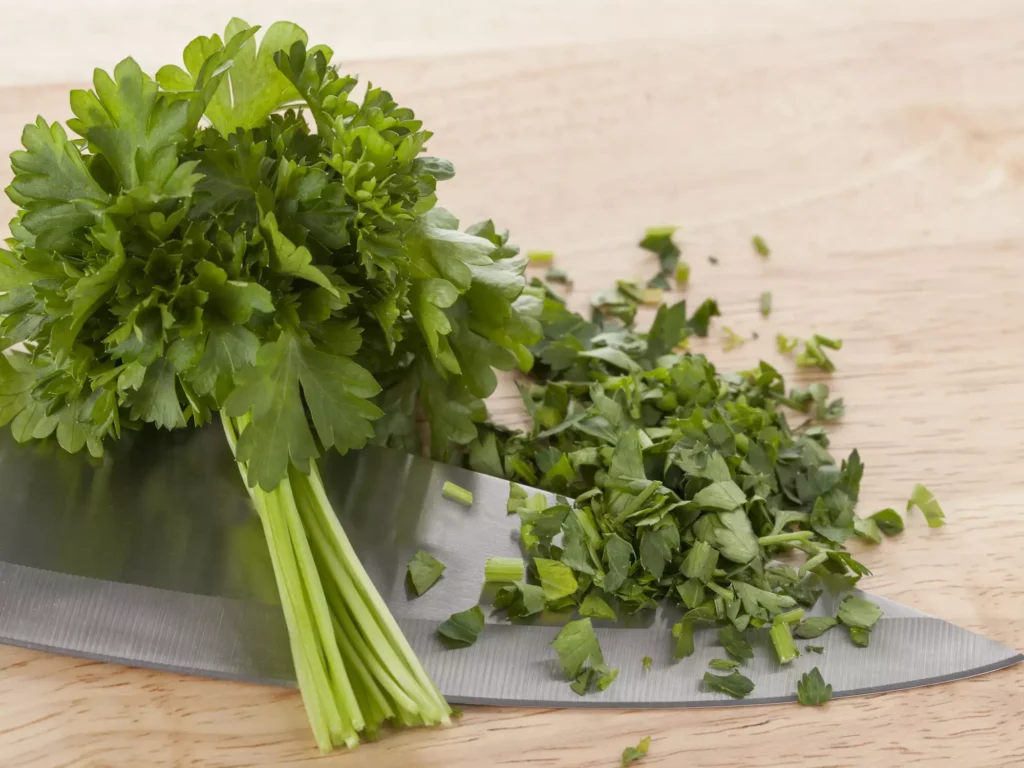
This leafy bright green herb is a staple in almost every household. It actually looks very similar to parsley, but the leaves are flat, not curled.
Cilantro is rather delicate, as the leaves are so thin, almost lacy. That’s the reason why you sprinkle it so late in the cooking process, otherwise, it would lose all the flavors.
When it comes to stems, they are tender but crunchy, plus contain loads of flavor. Cilantro stems are popular in Thai cooking, due to their specific taste and texture.
The most interesting thing about cilantro is the fact it is actually coriander. More precisely, cilantro is the name for the leafy part of the coriander plant.
The plant in question is called Coriandrum sativum and it gives two popular spices, just from different parts. Coriander comes from seeds and cilantro from leaves and stems.
Of course, they have very different flavor profiles, as seeds are nutty and warm-tasting. Having that in mind, you can use them to boost the flavor of meat, vegetables, and alcohol even. The taste is strong and specific for Asian cuisine.
Now, let’s get back to cilantro! It is a common herb almost anywhere in the world, but especially in Asian, Middle Eastern, and Latin American cuisine. As a herb, you will find it everywhere.
Known as Chinese parsley, it is a big deal in many Asian recipes not just as spice, but also as a vegetable.
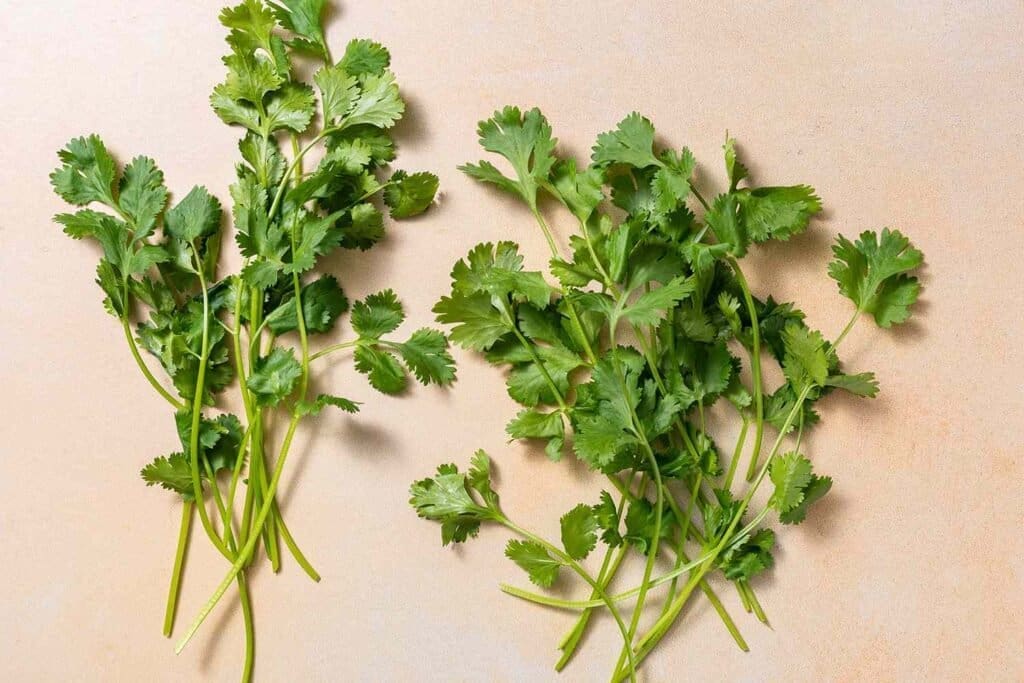
There is one specific salad that has cilantro as the base ingredient and it is super flavorful. It combines both leaves and stems, plus soya sauce, toasted sesame seeds, and peanuts.
Surprisingly, it can be a top-tier base for sauces. It marries with lime, creating zesty, refreshing notes, so this combination is amazing for noodles with a hint of chili and curry, as well.
But usually, people sprinkle it fresh and coarsely diced on top of various meals – all types of meat, fish, tofu, and soups, if nothing, for a pop of color.
It is more common on white and brown food than on green or red, which is probably a psychological thing. People tend to add toppings to food that looks dull!
If food flags were a thing, cilantro would be in the center of the Mexican one. It is part of almost every popular dish, skyrocketing both flavor and look. You can’t imagine a taco without this green herb sprinkled on top!
Salsa verde is a staple of Mexican cuisine and it’s packed with cilantro. It combines tomatillos, jalapeños, lime, and onion, creating a spicy, bright dip perfect for tortilla chips.
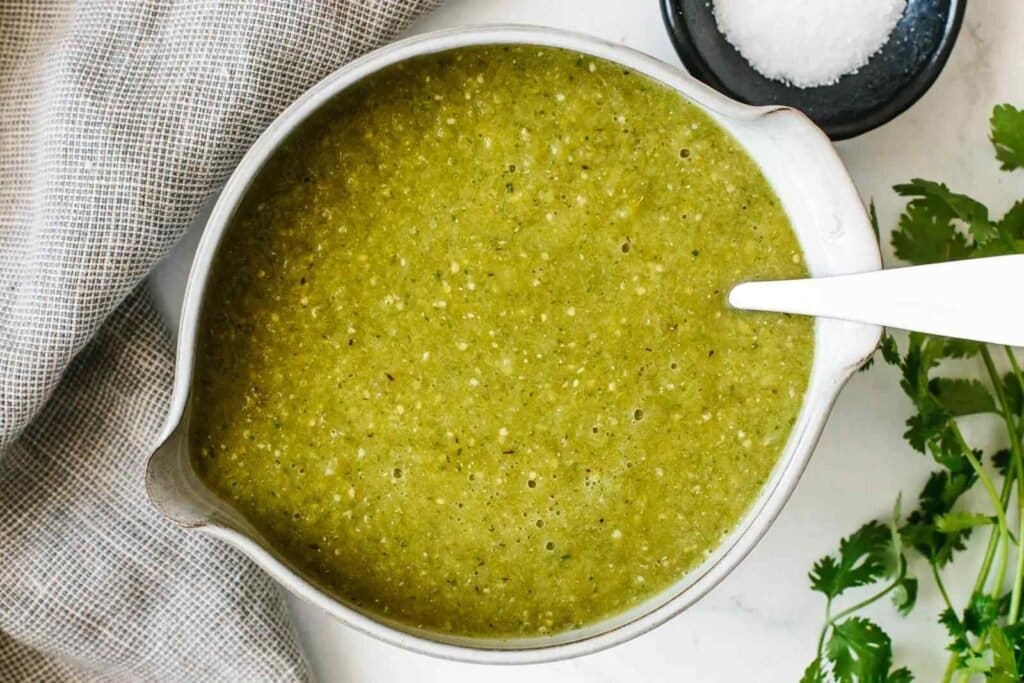
You can also add it to salsa, guacamole, mayo, salad dressings…Roasted poblano and cilantro soup is a huge hit, just as cilantro lime rice, and many other fun dishes.
Famous Argentinian Chimichurri sauce is one more option to boost almost any dish. This one is a bit more acidic, as you need both lime and vinegar for it. Besides, chop some onion, garlic, chili peppers, cilantro, parsley, and oregano for this, too.
This is amazing with grilled fish, veggies, and potato salad!
Last, but not least, let’s talk about Middle Eastern cuisine. There are numerous different dishes with cilantro and loads of other ingredients that create the unique flavor notes signature to Mideast only.
In salads like tabbouleh, kale salad, Persian-style salad, and couscous salad, cilantro adds a bright note when blended with different vegetables, grain, ginger, lime, and other herbs.
When it comes to mixing herbs, go for mint, dill, parsley, basil, and oregano – they complement each other impeccably.
Zhoug is one of the most popular condiments that comes from the Mid-East, and it’s cilantro-based. You can make it by blending cilantro, garlic, Aleppo chili peppers, olive oil, lemon juice, and a bunch of spices: cardamom, peppercorns, cumin, and salt.
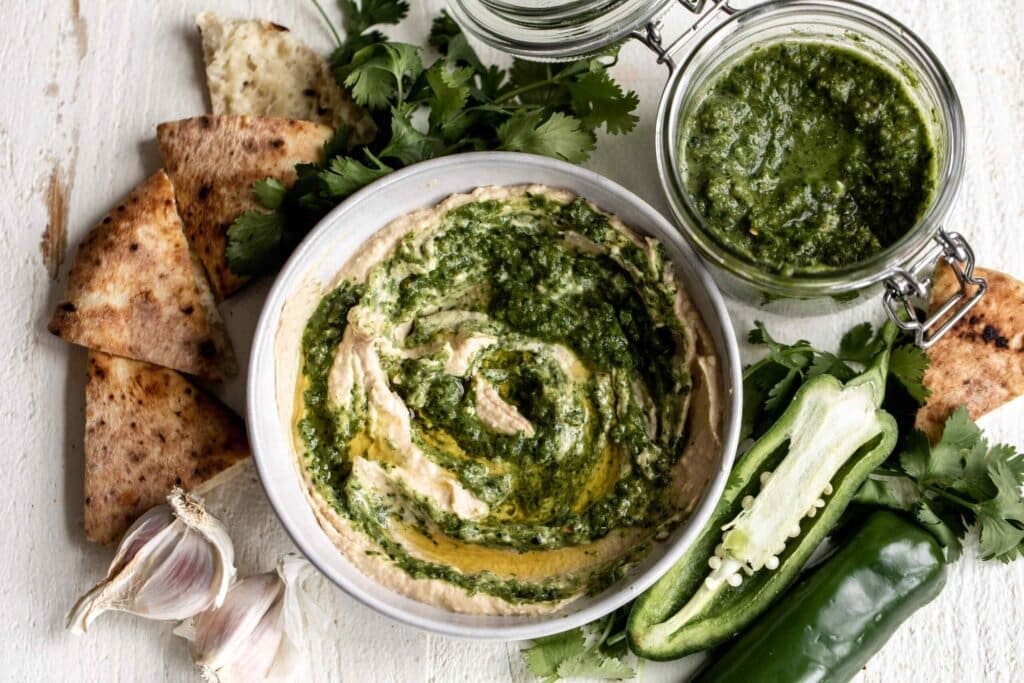
Next is green tahini, made with cilantro, tahini paste, garlic, lemon, and jalapeños. This pairs flawlessly with roasted meat, and potatoes, or acts as a salad dressing.
Indian chutney is one of the tastiest condiments you will ever taste! You can eat it alone with naan bread or dosa, drizzled over kabob, falafel, rice, biryani, roasted chicken, sandwiches, or as a dipping sauce for samosa. As you can see, it is super versatile and a whole lot flavorful!
If you like these ideas, check out recipes for cilantro basmati rice, Lebanese potatoes, orange pomegranate and cilantro relish, Moroccan yogurt dip,
Tunisian green shakshuka, and batata harra. Also, don’t sleep on Omani Paplou soup, which has a specific flavor but it’s worth trying!
Is Cilantro Hot or Spicy?
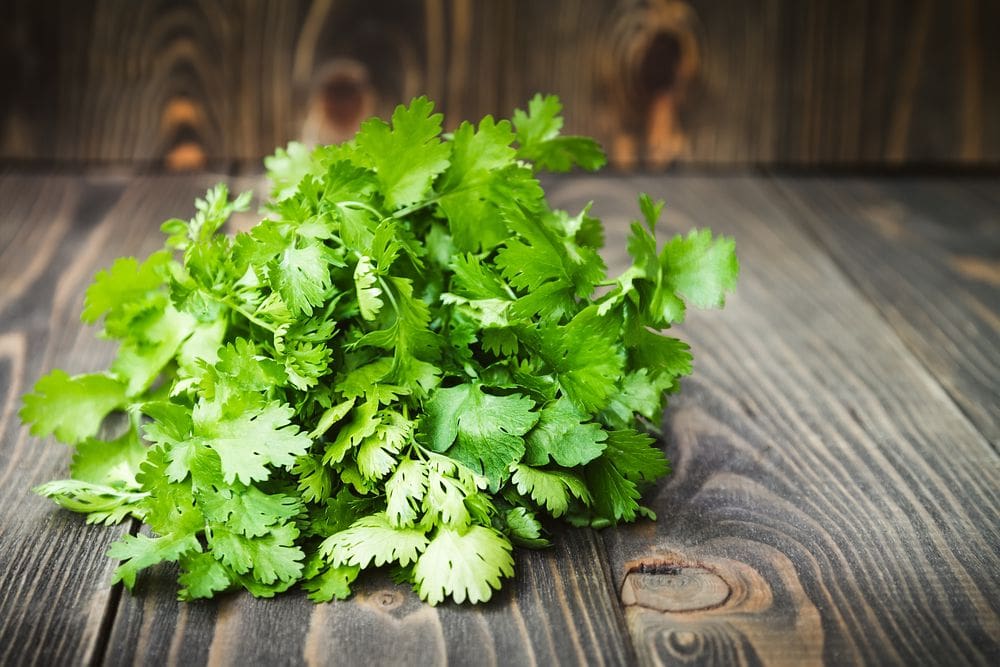
Cilantro taste is always a hot topic to discuss! You can love it or hate it, but you can never say it’s whatever.
For those who hate it, cilantro tastes soapy but there are actually scientific facts behind that. You would probably never consider that olfactory genes have a relation with the taste of a particular food, but here we are.
Some people have the OR6A2 gene cluster which is a smell receptor and they are much more sensitive to certain scents, like aldehyde chemicals. Cilantro contains those chemicals just like soaps, but of course, in smaller quantities.
That’s the reason why people describe it as “soapy”. Also, there are two more genes that detect bitterness, so it’s not required to have an OR6A2 cluster to hate cilantro.
As mentioned above, cilantro is super popular and widely used in Latin American, Mid-Eastern, and Asian cuisine.
That fact sparked the curiosity of scientists, so they discovered that those nations rarely have the genes in question.
How interesting this is?
But, for the people who love cilantro, it can elevate almost any dish! It leaves a bright, citrusy, fresh, and herby taste on the palate, the polar opposite of that soapy feel.
Cilantro is a fragrant and easy herb to pinpoint even if there is just a sprinkle of it in your food. Imagine the taste of parsley, but intensify it – it is zestier, herby-er, and somewhat green-tasting.
It’s not spicy and hot, though, like chili or jalapeños, but leaves a lingering warm feel and robust scent.
Cilantro’s Heat Level Compared to Other Herbs and Spices
| Characteristic | Cilantro | Parsley | Mexican Oregano | Basil |
|---|---|---|---|---|
| Heat Level | Mild-Medium | Mild | Mild | Mild |
| Flavor Profile | Fresh, Zesty, Slightly Citrusy | Clean, Herby, Slightly Less Intense than Cilantro | Citrusy, Lemony, Pairs Well with Spicy Dishes | Sweet, Spicy Touch, Resembles Cilantro |
| Best Substitution? | – | YES – Direct Substitute | YES – Especially for Latin-American Cuisine | OK – Less Similar, but still Fresh |
If you had a large taste table of herbs and spices to determine the heat levels, cilantro would be somewhere in the middle.
It is more potent than mild-tasting herbs like parsley or basil, but not spicy at all to parry chili peppers.
You can’t spice up the dish with cilantro, but you can bring a dash of freshness and zestiness to the table.
If you hate cilantro, but the recipe calls for it, here are a few very similar herbs in taste to substitute it without changing the flavor profile.
Parsley is also clean-tasting, herby, and zesty, just like cilantro, but a little less strong.
Next in line is Mexican oregano, where the main taste notes are lemon and citrus. This works amazing as a substitution, especially in Latin-American spicy dishes, as it pairs superbly with the heat components.
Cilantro doesn’t have as sweet notes as basil, but it is still a fine herb for swapping. It is because of an almost spicy touch, that resembles the cilantro and pungent aroma. Basil is European cilantro, and that’s why you can sprinkle it everywhere instead of it.
Health Benefits of Cilantro
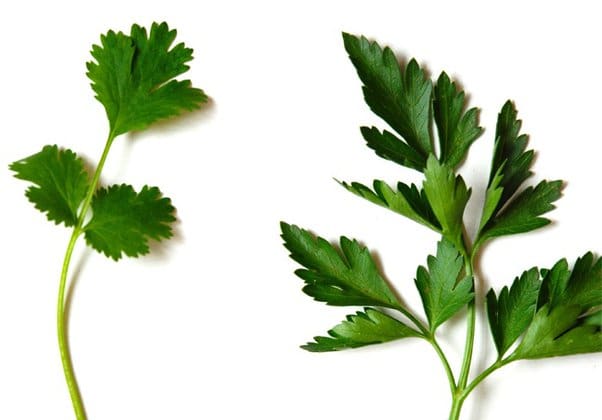
Cilantro is more than 90% water, so of course, it can’t have a significant calorie count. But, when it comes to fiber and vitamins, there are a few important ones to note – vitamins K, A, and E.
Having that in mind, there are some potential health benefits to consider. It is important to note, that cilantro can never substitute medications, and researches on these statements are still ongoing.
Vitamin K reduces blood clotting, which directly benefits the heart’s well-being. Furthermore, it could reduce blood sugar, so people with hypoglycemia should be aware of their portions.
Adding cilantro to your morning smoothies may help with your anxiety levels, antioxidation, and digestion as it prevents bloating, heartburn, and cramps.
Cilantro is a star of traditional medicine, especially Chinese. People use it to prepare various homemade remedies for anemia, bronchitis, gastrointestinal troubles, rheumatism, arthritis, and many, many more.
But, the main role of cilantro is mostly to season various dishes, so we speak about tiny quantities here. That’s why we can’t add it to the dishes with health benefits in mind, because the amount is simply not enough. Still, it won’t do it any harm!



